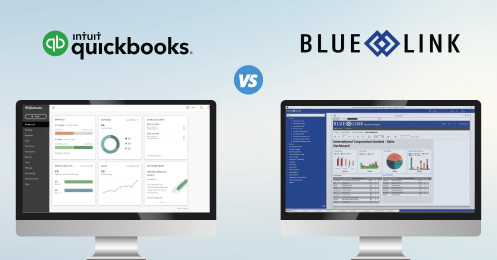For B2B companies looking to sell B2C through eCommerce channels, it’s not as simple as just setting up another consumer-facing website. Instead, changes to warehouse set-up, inventory management, back-end software and fulfilment processes all need to be considered. In many ways, B2B eCommerce and B2C are quite similar – both sales channels involve the same product and require the same basic end-to-end processes for picking, packing and shipping product. However, the demand of B2C eCommerce customers is quite different from B2B and the geographic spread of customers tends to be much larger. As a starting point, it is important to make sure that both B2B sales and B2C sales are managed through a single database – such as an all-in-one inventory and accounting ERP solution. This means eCommerce inventory management is consolidated across all sales channels and reduces the amount of manual work involved with managing multiple, standalone solutions. Other considerations include:
Different Order Types
With B2C eCommerce, many customers purchase “one-off” or single piece items, compared to the nature of B2B bulk purchases. Designing warehouse space to accommodate this means placing popular, single items closest to packing stations and the addition of consolidated picking. Consolidated picking works best when dealing with high sales volumes and a large number of SKUs. With consolidated picking, the order picker picks the same SKU for multiple orders at the same time – reducing the travel time throughout the warehouse. Once an employee has finished picking the same SKU for multiple orders, items are brought back to a packing station where they are sorted by order, packed and shipped. This allows a business to fulfil multiple orders (B2B and B2C) more quickly.
Omni-Channel Management
B2C eCommerce inventory management must encompass sales from all channels including B2B wholesale phone and email orders, orders from trade shows, orders from sales reps in the field, as well as other B2C orders through marketplaces such as Amazon and eBay. One mistake many companies make when implementing a B2C website is trying to use the B2C eCommerce platform as an inventory management tool. Not only does this involve additional manual work, but it does not provide a true view of inventory availability. Even if you distinguish B2B and B2C inventory within your system, the ability to see all product available helps to fulfil as many orders as possible. Consider the situation where an online B2C customer places an order for product that is only available from your B2B inventory. However, a quick review of available inventory shows that the product in question is arriving on a purchase order the following day. Would you rather lose the sale or fulfil from your B2B stock?
Warehouse Design
Another consideration with eCommerce inventory management is the virtual warehouse. This groups distribution warehouses together in a network so that back-end systems consider all available inventory for fulfilling orders (irrespective of actual physical location of product). With virtual warehouse management, inventory might be held in a warehouse, retail store, vendor location or 3PL. When a customer places an order, effective virtual inventory optimizes the fulfilment process by locating the product closest to the customer for fulfilment. This method of inventory management has many benefits including the ability to offer more product and brands to all customers without having to buy additional warehouse space. However, it requires that you build and maintain good relationships with suppliers, 3PLs and other vendors who manage inventory on your behalf – to ensure they provide the same level of customer service and efficient order fulfilment.










